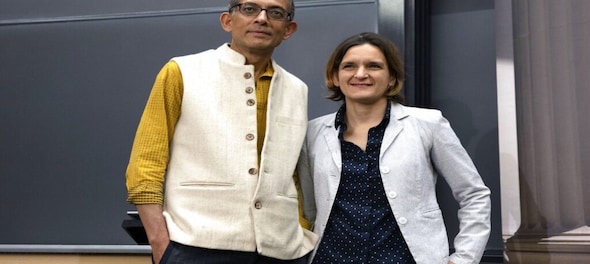
The effective tax rate on corporate profits (i.e. profit before tax or PBT) was reduced this fiscal from 33.90 percent to 25 percent through the Taxation Laws (Amendment) Ordinance, 2019, promulgated on September 20, 2019. Many analysts consider it a significant step in triggering a virtuous cycle of investment and economic activity. However, Nobel laureate Abhijit Banerjee feels otherwise. In a recent interview, he said that there is no basis for believing that the corporate tax cut is good for the economy.
In his words: “The media basically happily parrots the ‘common sense’ of not throwing sops to the poor… and that we need tax cuts for the rich for them to do anything… People in authority say these things – how something like the recent corporate tax cut is good for the economy as a whole – and the economic media, absolutely to the man, was endorsing this. There’s no basis whatsoever (for such a belief).
Strong backing in economic theory
With due respect to the Nobel laureate, corporate tax cuts have strong backing in economic theory. Return on capital is in the form of dividends (or, alternately, capital gains). Return on labour is in the form of wages or professional fees. The supply of capital is more elastic than the supply for labour: which means that it is easier for capital to move out of a taxing jurisdiction than labour. Capital being more footloose than labour, it will move out of a jurisdiction to a low-tax jurisdiction if it is taxed at a high rate. The conclusion that economic theory derives from this is that return on labour should be taxed at a higher rate than return on capital.
Now let us take India’s case. The tax rate on individuals (at the highest slab) is 30 percent. Along with surcharges, the effective tax rate for an individual earning above Rs 5 crore is 42 percent. Capital, on the other hand, is usually invested in the corporate form. On a PBT of Rs 100, a company has to pay corporate tax of Rs 33.90. Thus, the profit after tax (PAT) is just Rs 66.10. The company pays back to investors in the form of dividend. When paying the dividend, the company is hit by another tax (the Dividend Distribution Tax or DDT) of 20.35 percent on Rs 66.10. So the dividend that finally gets paid is just Rs 52.65. So the effective tax hit on capital is 47.35 percent.
Thus, the tax on capital (47.35 percent) was higher than the tax on labour (42 percent on income above Rs 5 crore for HNIs) in India. This was an anomaly. Domestic firms coped with such high rates by taking advantage of various exemptions and deductions that were available in tax laws. Foreign investors earlier managed to circumvent the high corporate tax rates by resorting to treaty shopping. They invested in India through a conduit country that had a favourable tax treaty with India. As a result, they did pay the 33.90 percent corporate tax, but managed to scuttle the 20.35 percent DDT (or its alternate, 20 percent capital gains tax) on the accumulated profits after tax. But a series of renegotiation of tax treaties in 2015 and 2016 plugged the loopholes that led to treaty shopping.
A logical step
Corporate tax cut is the logical culmination of the tax reforms that started with plugging of loopholes. Sound tax reforms are always two-pronged: phase out loopholes and exemptions, and lower tax rates.
After the 2019 Ordinance, the effective corporate tax rate now is 25.17 percent. Companies cannot claim any exemption or deduction on this. Thus, a PBT of Rs 100 yields PAT of Rs 74.83. Upon paying DDT of 20.35 percent on this, the dividend take-home is Rs 59.60. Thus, the effective tax hit on returns on capital is 40.40 percent. This is marginally lower than the peak effective tax rate of 42 percent on labour.
When Banerjee makes a case for higher corporate tax rates, he misses out on the bigger picture. Higher corporate tax rates do not lead to higher revenue collection (to be used for welfare measures). Rather, corporate tax rates higher than an optimum push capital out of the country.
Probably Banerjee has not accounted for the anomaly that existed in Indian tax structure before the ordinance; or he missed out on the negative impact that treaty renegotiations of 2015 and 2016 had on FDI coming into India. Many analysts also ignore the fact that a company opting for the new reduced tax rate cannot claim deductions or exemptions.
Smarak Swain is author of Loophole Games: A treatise on tax avoidance strategies. The views are personal.
First Published: Oct 25, 2019 1:32 PM IST
Check out our in-depth Market Coverage, Business News & get real-time Stock Market Updates on CNBC-TV18. Also, Watch our channels CNBC-TV18, CNBC Awaaz and CNBC Bajar Live on-the-go!


PM Modi confident of BJP sweeping Bihar and UP, banks on 'sympathy' in Maharashtra
Apr 29, 2024 9:38 PM
Exclusive: Can't fix elections in India, not even for a municipality, says PM Modi on Opposition charges
Apr 29, 2024 9:25 PM
Supreme Court dismisses plea seeking postponement of CA exams; details here
Apr 29, 2024 2:29 PM
Just 8% women candidates contested first two phases of Lok Sabha polls
Apr 29, 2024 12:00 PM

